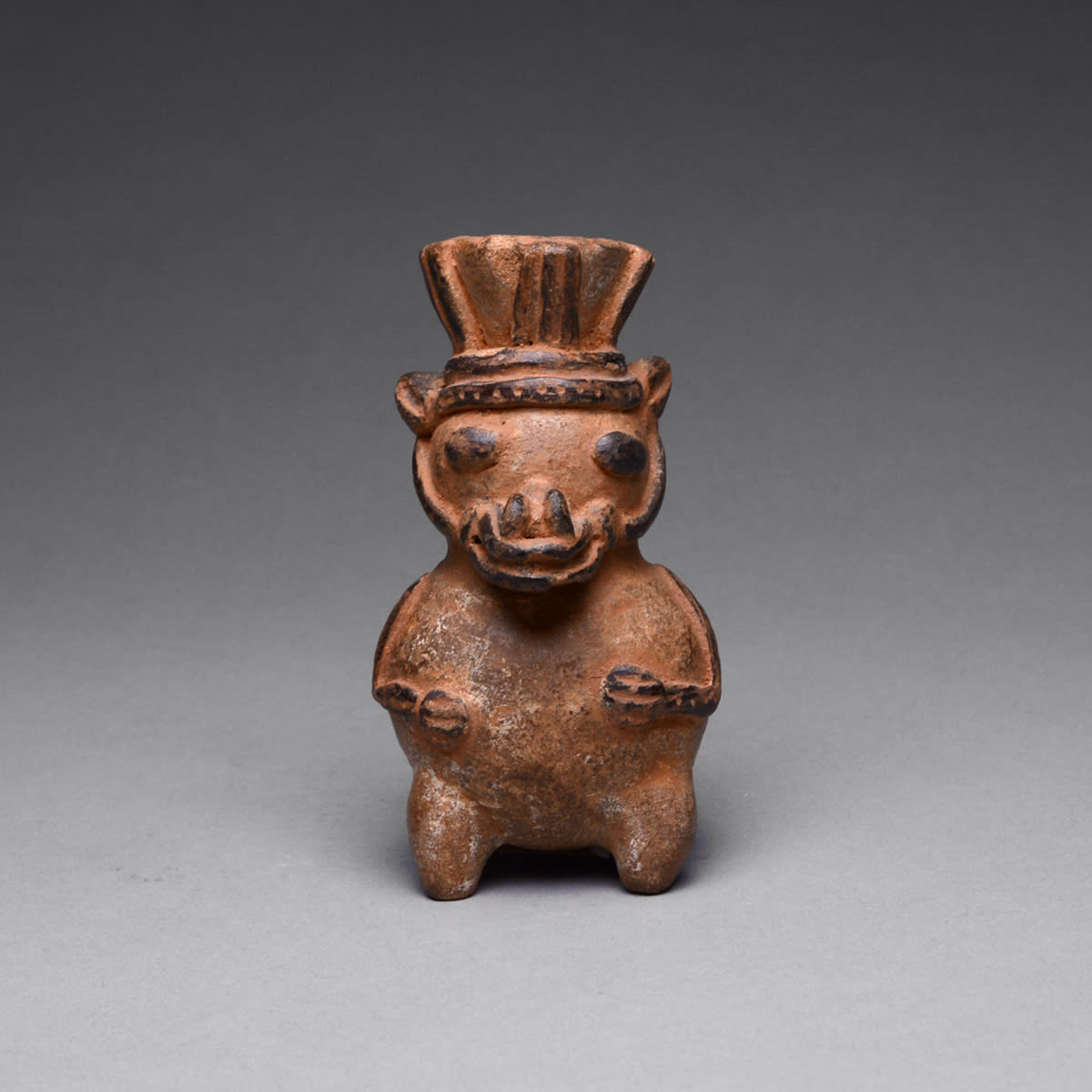Guanacaste Zoomorphic Ocarina, 300 BCE - 300 CE
Terracotta
9.8 x 5.4 cm
3 7/8 x 2 1/8 in
3 7/8 x 2 1/8 in
PF.3150
Further images
This ocarina has been cleverly designed in the shape of a human figure arrayed as a monkey and a crocodile. The relative degree of a 'human' or 'monkey' or 'crocodile'...
This ocarina has been cleverly designed in the shape of a human figure arrayed as a monkey and a crocodile. The relative degree of a "human" or "monkey" or "crocodile" seen in this delightful work of art is due to one's own perception. Some may see it as an obviously masked human, while others may see it as a much more ambiguous phenomenon which has monkey, crocodile and human characteristics. This ocarina probably depicts a shaman or chieftain-shaman with a high political and religious status. The monkey and crocodile may have been chosen as symbols of strength and nobility among animals. The monkey is reclusive in nature, a dweller in the high forest canopy and a striking image when glimpsed with its human-like arms, legs and face. The monkey is the closest resembling animal to ourselves, and it is possible that it was viewed as an emissary, the all-knowing "eyes and ears" of the shaman-monkey. The crocodile is also reclusive in nature, but it dwells on the land and in the swamps. It, too, is a striking image when glimpsed with its frightening teeth, long snout and bulbous eyes. Ocarinas come in a variety of sizes, producing tones ranging from that of a tenor recorder to that of a shrill whistle. The mouthpiece and the size of the resonance chamber are modified to produce different tones. Ocarinas are the musical instruments of the New World and are found in high-status tombs. This suggests use in a ritual context. It is a charming work of art with its crocodile snout and monkey ears. Its royal head is adorned with a dazzling crown and it looks as though it is smiling underneath all its glory. This special ocarina continues to pass on its magic and alluring appeal from ancient hands.





